Country Joe is More Than Woodstock—About 40 Albums More
by Rip Rense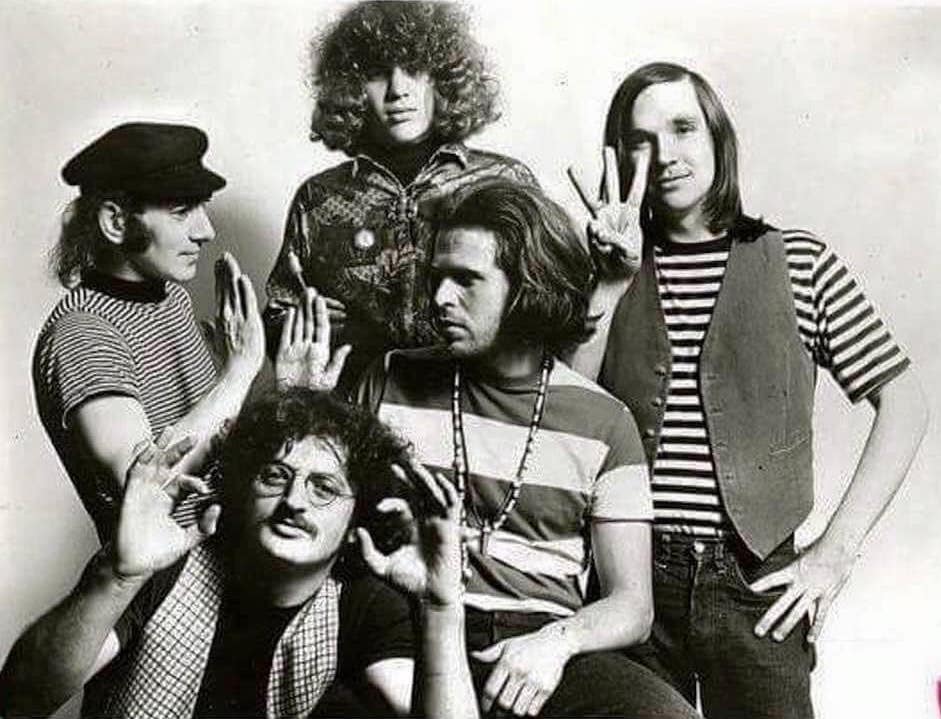
Country Joe and the Fish classic lineup (Back row, l. to r.: Gary “Chicken” Hirsh, Barry Melton, Bruce Barthol; front: David Bennett Cohen, Country Joe McDonald)
I guess it’s time for a brand new song
one that doesn’t look back
I guess it’s time to be moving on
Thanks for the tears and the laughs
I guess it’s time for a brand new tune
if there’s something to say
Time for one more go-around
before we pass away…
But I don’t feel so comfortable
With today’s push and shove
And I find myself wanting to be
back in the summer of love…
—Country Joe McDonald, “Summer of Love.”
When Country Joe McDonald shuffles off to Buffalo, which, it is hoped, is a long way off, the obits will be about two things: the “Gimme an ‘F’” appearance at Woodstock, and his “I-Feel-Like-I’m-Fixin’-To-Die Rag,” the anti-Vietnam War anthem.
It will also be mentioned, probably in passing, that he wrote and recorded somewhere around 40 albums, not including the landmark ’60s psychedelic masterworks by Country Joe and the Fish, played and toured constantly, lent his voice to cause after cause, from opposing war to advocating for military veterans, nurses, animals and ecosystem.
Brings to mind the late Dame Maggie Smith being hailed for Downton Abbey and Harry Potter after a lifetime of superb acting on stage and film…
McDonald, a remarkably enduring singer-songwriter/activist, now retired in his beloved Berkeley at 83, has never really been given his due as one of the original, prolific troubadours of American music. He is a master of the piquant ballad, a scion of the sardonic sung commentary, a pioneer of the psychedelic, a wit-meister of the comic ditty, an avatar of music-as-activism, and a poet.
His albums range from rock to folk to country to jug band, from raucous to gentle, from large arrangement to lone guitar, from themed (“Vietnam Experience,” “Animal Tracks”) to covers (“Tribute to Woody Guthrie,” the country “Tonight I’m Singing Just for You”). “War War War” is as potent an anti-war album as any ever made, a highly original setting of the haunting poems of the Scottish-Canadian writer, Robert W. Service.
Almost every one of McDonald’s LP’s features examples of his best work, hardly something that can be said of most artists. Then there is that plaintive, pure, sometimes haunting voice, that impeccably on-key singing, and that articulate, precise, just-right acoustic guitar accompaniment.
Listen to “Who Am I” from the band’s sophomore album
Yet the bulk of his work is not widely known. Even the singular, revolutionary music McDonald made on the four albums by Country Joe and the Fish (not counting a fifth with a different line-up, and an uneven 1977 reunion album)—long hailed as classic San Francisco ’60s fare—has always been upstaged by the more high-profile bands of the time, notably Jefferson Airplane and the Grateful Dead. Consider: there are no published biographies of McDonald, or Country Joe and the Fish.
Check out some of McDonald’s music here.
Despite his San Francisco/Berkeley identification, Joseph Allen McDonald was not a native San Franciscan. Born on January 1, 1942, he grew up in the then-sleepy Los Angeles suburb of El Monte, oddly enough, in the ’50s, with brother, sister and devoutly communist parents (he was named after Joseph Stalin, whose nickname, “Country Joe,” he later adopted, in an apparent moment of idealism, or protest). He quickly became fascinated with music, hanging out at the now legendary El Monte Legion Stadium, listening to every gospel, rhythm ’n’ blues, and rock ‘n’ roll group, mostly Black and Latino, who played there (having been largely shut out of mainstream venues.) In time, young Joe took to listening to jazz and blues at the (also legendary) Light House in Hermosa Beach and played trombone in junior high and high school.
In 1959, he enlisted in the U.S. Navy and was stationed in Japan for three years. Upon return to the States, McDonald enrolled in L.A. State College (now CSULA), where he met banjo/guitar player Blair Hardman in the campus Folk Music Club, of all things quaint. Their burgeoning interest in Woody Guthrie, Cisco Houston and other folk figures inspired McDonald to learn guitar and write songs, some of which were recorded in a do-it-yourself Pasadena studio for an album he made with Hardman in 1964, The Goodbye Blues. That same year, the fledgling folkie moved to, and fell in love with, Berkeley, wishing to add his voice to the percolating music scene there.
Kicking around with other local musicians in the wake of the Berkeley Free Speech Movement, McDonald also founded and edited an underground political magazine, Rag Baby, eventually deciding to augment it with music as a “talking issue.” He and guitarist friend Barry Melton, who took the nickname “The Fish,” after a line in Mao Zedong’s Little Red Book, had been playing together, along with various other local musicians, as Country Joe and the Fish, and by 1965, much of the classic lineup of the band was in place. The “talking” Rag Baby EP contained the first version of “Fixin’-To-Die Rag,” and an uproarious, daring denunciation of President Lyndon Johnson, “Superbird,” The lyrics were downright subversive for their time. To wit:
Come out, Lyndon, with your hands held high/Drop your guns, baby, and reach for the sky/Got you surrounded and you ain’t got a chance/Send you back to Texas make you work on your ranch. . .
“We weren’t even sure we were going to remain a band for very long, but we wanted to make a record,” said Country Joe and the Fish keyboard/guitarist David Bennett Cohen, in a 2017 article in The Observer. “The EP came out surprisingly good.” (Note: Cohen and Melton are on tour in fall 2024 as “The Fish and the Wizard.”)
To unfairly summarize in short-shrift fashion, the first Country Joe and the Fish album, the jangly, shockingly raw Electric Music for the Mind and Body, became hot stuff on Tom Donahue’s hip freeform KMPX-FM underground radio show, in May 1967. With Bruce Barthol (bass), Cohen (guitar, keyboards) and Gary “Chicken” Hirsh (drums), it was a flagrant reflection and a promulgation of LSD-inflected living that was taking hold among tens of thousands at the time. “Bass Strings” came to be regarded as one of the first psychedelic songs (complete with McDonald whispering “L. . .S. . .D” at the end.) Even today, the album remains a peak in the mountain chain of startling new Bay Area music of the time, later equaled in impact—but this time, with great musical polish, elegance—by the group’s magnificent second album, I-Feel-Like-I’m-Fixin’-To-Die, in November 1967.
Listen to “Bass Strings” from Country Joe and the Fish’s debut album, Electric Music for the Mind and Body
CJ&F had the most unusual musical personality of any Bay Area group of the time, what with its openly political content, McDonald’s unique voice and inspired songwriting, Melton’s stinging, from-the-spinal-cord fuzzbox solos, Cohen’s poetic guitar lines and bold Farfisa riffs, Barthol’s propulsive bass, and Hirsh’s decorative but groove-bound drums.
Explained Melton, in the Observer article, “Joe’s approach was…profoundly cerebral. His concept was basically to get a few people around and make something happen…We’d been a jug band, but we didn’t play in a conventional way. We were doing something new. We deliberately walked a different path. It wasn’t like we discussed it. We bridged folk and jazz with bluegrass, country and blues. It was an improvisational folk music, like what the Grateful Dead exploited commercially.” (Aside: The Grateful Dead used to refer to them as “those commies across the bay.”)
The third Country Joe and the Fish album, Together, in 1968, ironically found the rest of the group creating the bulk of the record, with McDonald involved heavily in only three or four tracks, but nonetheless it scored as a wacky, energized bit of musical agitprop. The band was splintering by the fourth, Here We Are Again, in 1969, aided here and there by Peter Albin (Big Brother and the Holding Company) and Jack Casady (Jefferson Airplane), and was either hindered or helped, depending on your point of view, by expansive horn and string arrangements.
McDonald’s solo career began with the endearing tribute, Thinking of Woody Guthrie, recorded in Nashville with country greats including guitarist Grady Martin, released in 1969. There was, however, a fifth Country Joe and the Fish album, CJ Fish, released in 1970, featuring McDonald, Melton and three new musicians to replace originals (Mark Kapner on keyboards, Doug Metzner on bass and Greg Dewey on drums—the Woodstock lineup.) It was a solid enough collection of songs but lacked the joie de vivre and off-kilter invention of the original band. After that, with the exception of the CJ&F Reunion album in 1977, and a live album and DVD with the Original Country Joe Band in 2005 (CJ&F minus Melton), and a 1996 Live at the Fillmore, 1969 CJ&F release, it was all solo for McDonald from that point until his last album, 50, released in 2017. His last live appearance seems to have been for the 50th anniversary of the People’s Park in Berkeley, in April 2019.
Watch Country Joe and the Fish perform “Rock & Soul Music” at Woodstock
Related: Which other Woodstock performers are still alive?
How to briefly sum up 47 years of creating music? You can’t. There was everything from simple paeans to home cooking (really) and the rewards of hard work, to a wonderfully sarcastic song mocking disdain for native peoples, and a de-romanticizing of poverty-stricken Jamaica, sad warnings about eco-cide. There were albums with various ex-Fish, backup musicians including Peter Green of Fleetwood Mac, Spencer Davis, Malvina Reynolds, David Bromberg, Maria Muldaur, the Persuasions; there were the Country Joe All-Stars with Dorothy Moskowitz from the United States of America, slick productions with members of the hit band Toto; songs for a movie soundtrack to Quiet Days in Clichy, from the Henry Miller novella, at least one FM airplay staple (“Breakfast for Two” in 1975), odes to coyotes, whales, pterodactyls(!), a heart-rending protest against baby seal slaughter (“Blood on the Ice”), possibly the most sarcastic anti-hunting song ever written (“Wilderness Trail”), an album with Jerry Garcia on half the tunes (“Superstitious Blues”), a solo guitar instrumental album set against sounds from nature (“Natural Imperfections,” with Bernie Krause), a kazoo-laden burlesque tune about corporate profiteering in South America, a raging, caustic swipe at trust-fund limousine liberals (“La-di-da”), epic science-fiction sagas (“Reaching for the Stars,” “Picks and Lasers”), witty ditties (“UFO,” “The Clone Song”), moving meditations on time and aging, a poignant lament over soul-killing urban sterility (“Fantasy”), a snarky, hilarious gibe at sex and violence in movies (“Movieola”), and always, anthems and ballads dedicated to love and peace.
Watch McDonald perform his tribute to a late friend, “Janis,” at San Francisco’s Winterland in 1973
Of special note is McDonald’s celebration of nurses, beginning with “Lady with the Lamp,” a song written about the heroic, self-taught angel of mercy who tended to the sick and wounded at enormous risk to her own life, Florence Nightingale. A portion of his McDonald’s’s website is dedicated to her and nurses in general. “Lady…” was released with an equally compelling tribute to American Red Cross founder Clara Barton (both with Jerry Garcia), plus two other nurse tributes, “Thank the Nurse” and “The Girl Next Door,” on the 2007 Rag Baby EP Thank the Nurse. McDonald remembered in the liner notes:
“In 1981 while attending a conference on post-war problems of veterans, author Lynda Van Devanter accused the audience of ‘ignoring women in the military.’ I promised Lynda I would write a song for her. I did, it was ‘The Girl Next Door.’ I also wanted to write a Florence Nightingale song, but it was years to come. I also took to reading a book about the famous American woman (Barton) who was a Civil War nurse, and the person credited with starting the American Red Cross. This turned into the song ‘Clara Barton.’ Then one day, lo and behold, out of blue came my Florence Nightingale song, ‘The Lady with the Lamp.’ I now had three ‘war nurse songs.’ I realized that I was in a rut. I felt bad that my brother was a nurse practitioner and my wife (Kathy Wright) a labor and delivery nurse, but I had no non-military nurse song. I was struck with the fact that nurses are seldom given thanks for the work that they do. Nursing is often just taken for granted. So after much thought and effort out came ‘Thank the Nurse.’”
Through the years, there have been countless solo tours, group tours, Europe tours, Woodstock reunions, a live traveling tribute to Woody Guthrie, a teaming up with the British band the Bevis Frond, to perform the entire Electric Music for the Mind and Body live in 1999, occasional appearances with Melton as Country Joe and the Fish (with various backup musicians), an attempt to reassemble CJ&F that failed to entice Melton and wound up as the Original Country Joe Band (early 2000s), tons of fundraisers for Vietnam veterans, animal rights groups, nurses, endless free appearances at Berkeley rallies and protests.
Watch McDonald perform Woody Guthrie’s “Roll in Columbia” at Ohio’s Fur Peace Ranch in 2012
His last most significant albums, in this writer’s opinion, are: www.countryjoe.com in 2000, a strong batch of new songs (plus Merle Haggard’s “Rainbow Stew”); Time Flies By, a joyful 2012 two-CD reinvention of many favorite songs from his career, in a jug-band setting; and, when no one expected it, a fine collection of brand new material in 2017, 50, with guest Blair Hardman, with whom he recorded his first album in 1965. Full circle.
In short, he has simply worked, always worked, regardless of charts, record labels, critics, the vagaries of the music business, and he has always had a dedicated batch of appreciators. The man, however much he will forever be identified with the so-called “Summer of Love,” and “Gimme an F” at Woodstock, is an American musical institution.
Where oh where did the time go
Somebody tell me I want to know
We were so young now we’re so old
Oh, where oh, where did the time go. . .
—From “Where Did the Time Go,” on his last album, 50, in 2017
[Country Joe’s recordings are available here.]
Watch Country Joe and the Fish perform “Not So Sweet Martha Lorraine” at the 1967 Monterey Pop Festival
- A Beatles ‘Reunion’ Can at Last Be Put Right: Opinion - 02/05/2025
- Country Joe is More Than Woodstock—About 40 Albums More - 11/02/2024
- The Beatles: Can AI ‘Fix’ Their Unreleased Material? - 08/17/2024

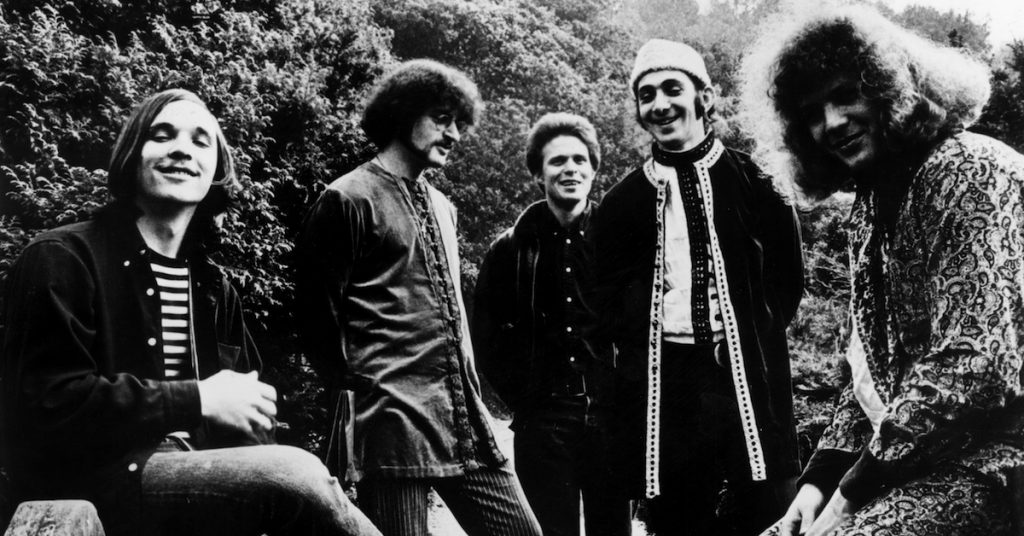

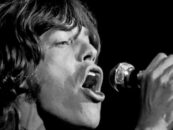
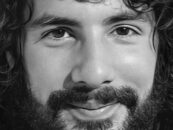
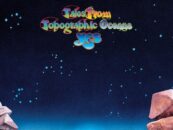
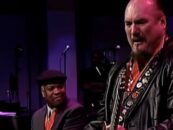

11 Comments so far
Jump into a conversationWow! Great article! I was 18 in 1969 and remember CJ&F as a favorite band. I loved Joe’s song writing but love their instrumentals even more. They are timeless. Thanks for the music and thanks for the insightful article.
I really enjoyed that article. While I’ve been a big fan of Country Joe and the Fish from their earliest days, I had no idea of Joe’s ongoing prolific career. I’m guessing that much of his primary audience and performances tended to stay centered around the West Coast, as I don’t believe I’ve ever seen him listed as performing in other parts of the country.
Me too, a huge fan since the first Fish album, and I was in the front row at Woodstock. Sometime in the ’90s I was excited to hear of a Country Joe concert at a skating rink, of all places, in nearby Laconia, NH. Showed up that night, no one there. Cancelled, I learned, because members of his backup band had hepatitis. Was hoping for another chance, never came.
Great article recognizing a unique musical force over the last 60 years!
WOW, Rip! Great article and deep dive into, yes, a highly underrated singer, songwriter, musician, social commentator and activist. While unknown to many, Joe could easily be considered the heart and soul of the historic cultural revolution of the late ’60s. A bio of his life is in order and overdue.
I love this recognition for a musician and a band that are vastly under appreciated today. Thank you, Rip Rense!
Finally! At long last Country Joe’s many solo albums get their due. Thanks Rip! So many people don’t know these wonderful albums. “Hold On It’s Coming” is a masterpiece and one of my all time favorite albums. There’s the innovative “Paris Sessions”, the intimate “Incredible!Live”, 1974’s all but unknown “Country Joe” which is chock full of great songs. The list goes on. Most of these albums are not even reviewed at Allmusic. People don’t know what they are missing.
By the way, there actually is a biography of sorts of Country Joe. The self-published “Country Joe & Me” by the late Ron Cabral. It can still be found at Amazon.
So much insight, info, and zing in this article. What a beaut of a tribute to Country Joe. I especially enjoyed the incredibly credible settings of Robert W. Service poems. Bravo and thank you Country Joe, bravo and thank you Rip Rense!
Here’s a great clip of Country Joe doing “Jesse James” from the “Country Joe” album on Midnight Special in 1974. He’s accompanied by Dorothy Moscowitz and Peter Albin.
http://www.youtube.com/watch?v=9fk8K6tYaz0
Thank you! Have not seen this before.
SAW COUNTRY JOE in San Diego @ a concert in a small Church, guessing 200 people in attendance, hosted by Acoustic Music of SD, Oct 21 2005..it was very sweet, musical, personable, and while he was older and mellower, he was elegant and classy, he sang great songs, told great stories and he debated about singing the ‘F’ Cheer, then did it anyways…closed the show with THIS LAND IS YOUR LAND, which so impressed me, making me tear-up, out of gratitude and respect!! Then stayed around to speak with audience members, sign autographs..one of best concerts ever, and he seemed a more thoughtful, wise and peaceful, grounded man…I love the music I own by him, and listen as often as possible! I agree with RONS above re HOLD ON & INCREDIBLY LIVE & would add INTO THE FRAY and tracks off 45 other cds, plus records and tapes in my itunes..it was a great honor, really to see him in such an intimate concert…